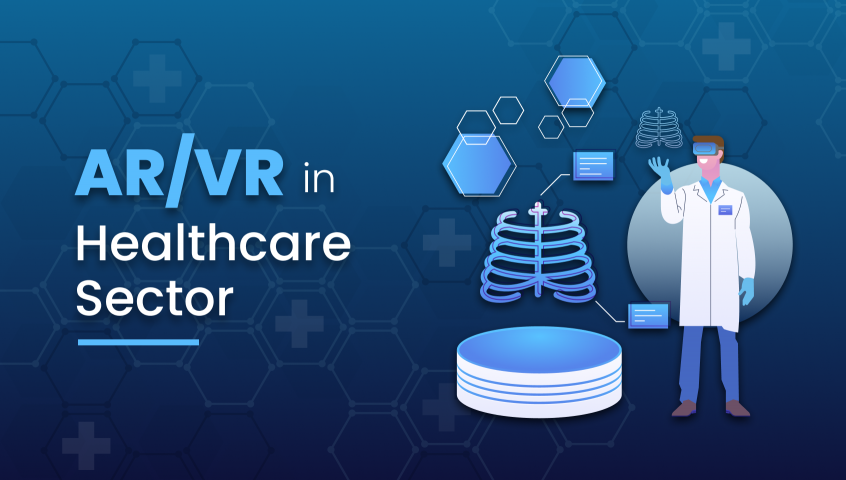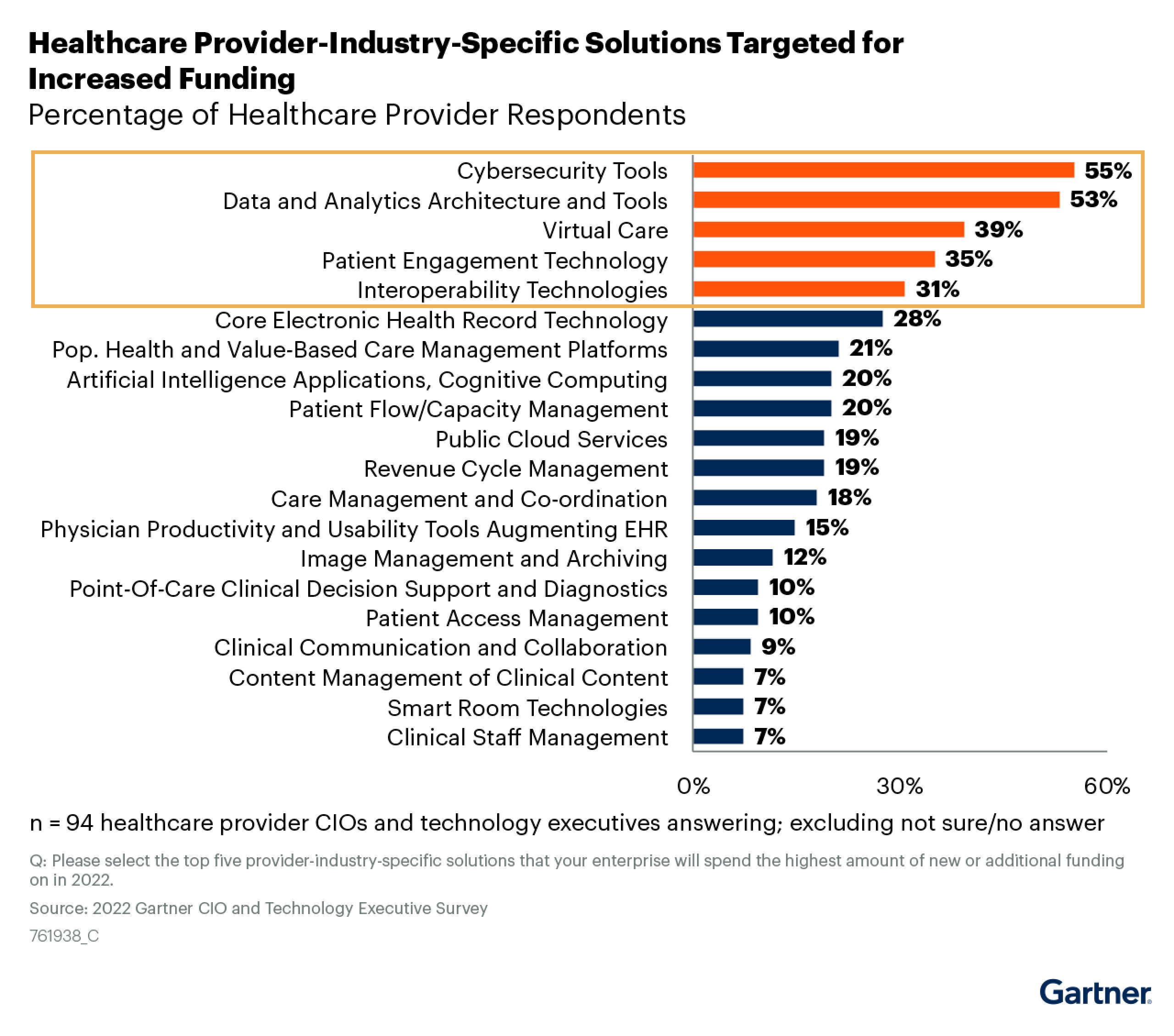
The advancements of AR/VR in Healthcare are redefining diagnosis, consultation, collaboration, training, and many other aspects around them. With the onset of the COVID-19 and the increase in medical emergencies, investments in Healthcare Tech witnessed a sudden surge in tools that enable self-service and predictive analytics. Don’t be surprised when we say Healthcare Tech is the second biggest marketplace for AR/VR technologies after Gaming.
Analytics Insight predicted an exceptional growth in the global market of AR/VR in healthcare. It is most likely to grow to be USD 11.6 billion in 2028 at a CAGR of 38.3% which was just USD 1.2 billion in 2021. COVID-19 still has its impact on various enterprise digital ventures, including investments in Healthcare Tech. A recent survey by Gartner made it clear that CIOs would like to extend the medical service delivery outside the hospital walls, and they are exploring beyond traditional technologies.

Immersive visualization techniques are overlaying an added layer of information on top of physical environments while creating unique experiences for better ways of collaboration and storytelling. Use cases of AR/VR in Healthcare, whether they are therapeutic or educational, can be chalked down to these 4 levels of operations:
- Diagnostic
- Treatment
- Billing and Claims
- Educational or Training
DIAGNOSTIC
The efficiency of a medical investigation process highly depends on its ability to gather more information, quickly identify, visualize, and analyze symptoms. The clinical laboratories are making moves towards strategic investments in healthcare tech to visualize the patient data better with minimal to no physical contact between the patient and medical staff. AR/VR in healthcare can enable various data visualization techniques such as body mapping, thermal imaging, advanced diagnostics, and digital twin of patient’s physical condition for better description. Augmented Reality seems to be the next phase of healthcare tech evolution that can become the conventional method for data identification and visualization.
Here are some common challenges of data visualization at the Diagnostic level:
- Speed: If COVID-19 taught us anything, it’s the importance of detecting the symptoms faster. Not understanding the symptoms in time or misinterpreting the symptoms can lead to awful consequences. Even with all the advancements in healthcare tech, COVID tests took up to 24 hours until recently and even the most common diagnostic methods such as CT scans take about 4-5 hours for the results to get populated.
- Accuracy: Human body is evolving and adapting to the changing world with each generation. Treatments for diseases like Cancer require precision of detection and diagnosis. Datasets from various medical institutions have proved that the accuracy of investigative methods such as MRI is not more than 83% and CT Scan is 75%.
- Correlation: Despite various efforts by medical institutions and governments to preserve patient medical history with unique IDs, data correlation is still a challenging area for medical diagnosis. Knowing past conditions and corresponding them with the current state of the patient to identify the exact problem and its solution is still not a mainstream practice.
- Formats: Many medical diagnosis methods offer the output in very limited formats, such as a plain film that can require placing it against bright light to read it.
Our understanding from a recent POC:
By involving multiple sensors and connecting them to a cohesive interface, we can capture and visualize the information more efficiently than ever. AR/VR in healthcare is improving and there are many high-tech devices available in the market that are capable of immersive projection of data. The problem is lack of skills in the market to build solutions that can interpret the information and create outputs that are fast and reliable.
At Qentelli, we have recently worked with a company that demonstrated the capability of AI in healthcare space. This project required us to upload patient’s X-ray / CT scans and calculate the distance between spinal discs using Machine Learning and Deep Learning techniques. The project is about calculating the exact spacing between discs and the other measurements such as size, placement, radial angle of spine, etc. Later, the captured information will re-create the spine with its intricate details, of course, scaled down to suit the project device’s specification. Objective of the project was to provide a relatively accurate measure to the Doctor’s (end-users) that will indicate the probability of a surgery being successful to a similar patient during diagnosis.
We, also, demonstrated the capability of using AR/VR in healthcare space. We have created an augmented model of patient’s condition using various images and projected reports directly in an AR device such as MS HoloLens. We also worked on streaming the live video on MS HoloLens. This helped us in directly connecting to the device that is key to the diagnosis process. Our aim is to enable the doctors to look at the current condition of the patient in near real-time. The effort is to eventually eliminate the processing time to obtain results and visualize the patient’s status-quo in a better format that is immersive and of high quality.
TREATMENT:
If you scroll up and check the Gartner survey, the third most targeted investments in healthcare tech is ‘Virtual Care’. Many hospitals are evolving their digital capabilities to create a consolidated healthcare ecosystem. Virtual treatments now are only limited to video-enabled consultations and documentation of surgeries and procedures for future references. The emergence of AR/VR in healthcare is pushing the boundaries and all the signs are pointing towards multi-experience.
“Mixed Reality platforms are increasing the digital quotient of modalities to offer more immersive interaction channels to the end users. Multichannel and Omnichannel experiences simply doesn’t make a cut anymore. Rise of Metaverse is already making waves in various industries and Healthcare is taking advantage of its virtual interaction capabilities to treat the patients better.”
Here are some areas where AR/VR can enhance patient care
- Surgeries and Clinical Procedures: The advancements of Machine Learning can be applied by bringing together patient’s stats, data archives, and specially created algorithms. We can create a simulation of the entire operation procedure and study the potential bottlenecks, critical requirements, and post-procedural side effects.
- Psychological Relief: Rest and psychological balance play a crucial role in a patient’s recovery. Re-creation of ideal environments for better sleep and relaxation using Virtual Reality can speed up the recovery time.
- Self-help for staff: Understanding, operating, and maintaining various medical equipment could be very tricky for inexperienced non-medical support staff. Fortunately, the use cases of AR/VR in healthcare have evolved to offer multi-dimensional manuals for equipment for effortless understanding.
The investments in healthcare tech to create environments to improve healing, simulations to reduce anxiety, surgery run-throughs to reduce risk, and assist the supporting staff to aid patients better have been around longer than AR/VR in healthcare. But the emergence of Augmented and Virtual Reality improved the intricacy of detailing in data visualization, enabled sophisticated smart assistance, and least invasive surgical procedures.
BILLING AND CLAIMS:
Billing and payments go beyond the Medical space, but AR/VR has revolutionized this part too. Medical billing processes can be overwhelming for people on both sides. Mixed Reality can look through multiple sheets, multiple communications, and handle multiple POCs as needed. AR can look through the Life Insurance plans and simplify the complex procedures of picking plans.
EDUCATIONAL AND TRAINING:
Investments in healthcare tech not only benefits the medical institutions but also broaden the scope of learning for the trainees. Distance learning can be personalized with contextual data and mixed reality experiences can change the game of medical training. Augmented Reality is a great add-on for virtual communications, whether it is between doctor-patient, doctor-doctor, or trainer-trainee.
Remember when WHO declared shortage of physicians, technicians, and front-line support during the first wave of COVID-19? With more virtual trainings, it could be easier to train more professionals and medical practitioners by teaching them deeper insights through immersive learning.
AR/VR in healthcare today is only limited to visualizing, but many POCs are being worked on enhancing the current practices to integrate base information with MRI, CT, and other tests. There is tremendous progress in this space, and it can change lives and even the definition of medical care for individuals.
Qentelli is partnered with a few giant medical institutions working on solutions to bring the good of Mixed Reality and Big Data together. Want to learn more about our findings of these projects? Drop us an email. info@qentelli.com

